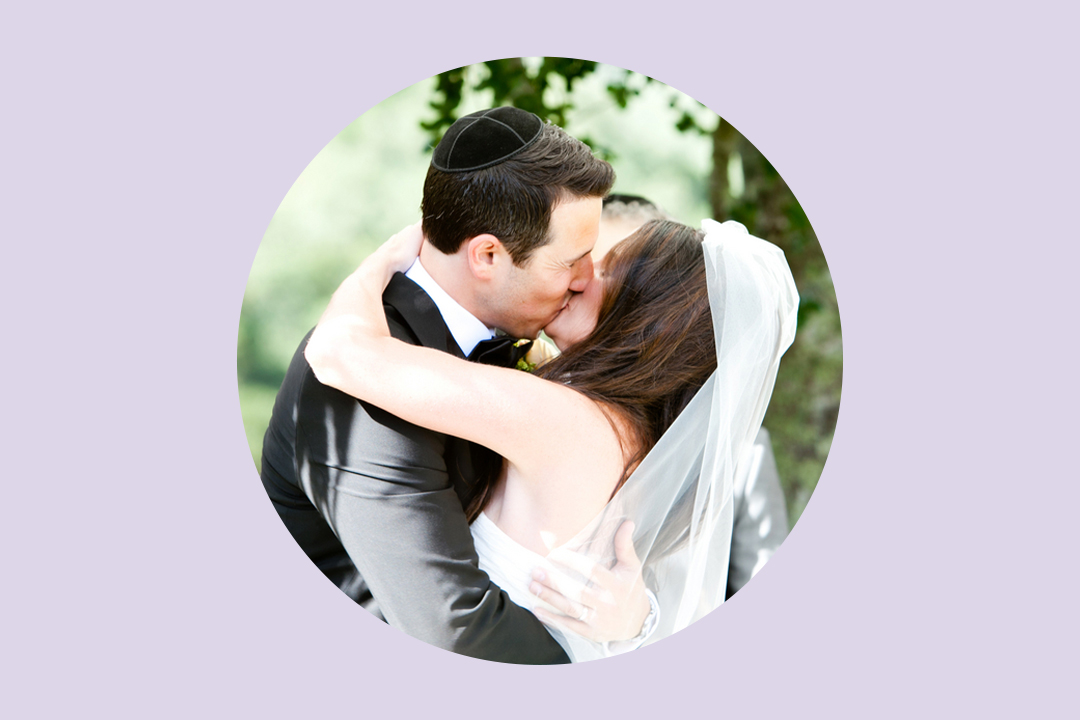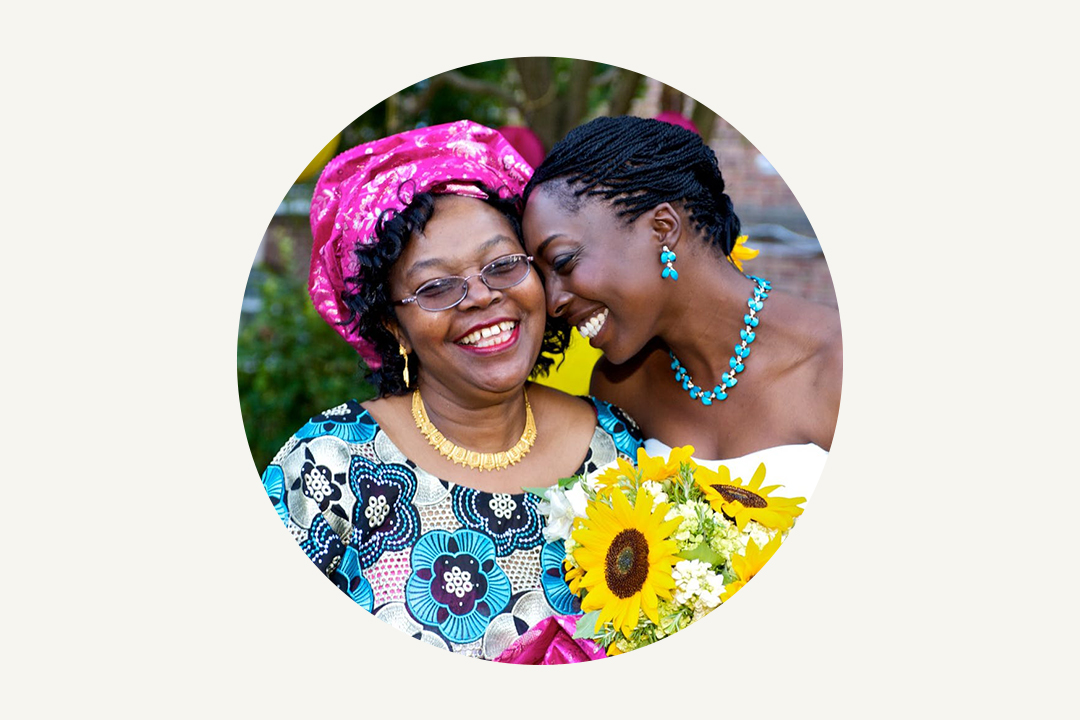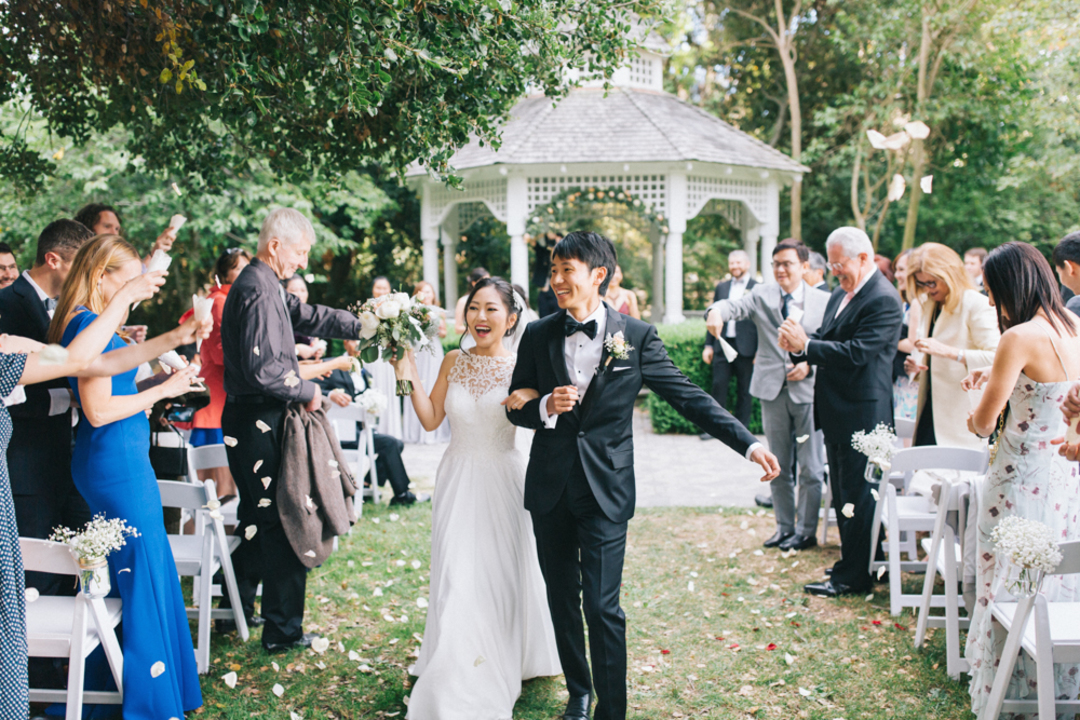- Expert advice/
- Wedding planning 101/
- Wedding day/
- 42 Unique Wedding Traditions Around the World
- Wedding day
42 Unique Wedding Traditions Around the World
More and more, couples are opting to include specific cultural traditions on their wedding day. Here’s a look at some wedding customs couples are incorporating into their bid day.
Last updated February 5, 2024

The First Look ✨
- Some couples are divided about integrating traditional American wedding customs into their weddings, while other couples are doing away with traditions such as the garter toss, bouquet toss, and cake smashing.
- More and more couples are including specific, cultural traditions in their weddings by personalizing them.
- Wedding customs cross cultural lines and can be integrated into your wedding day in whichever way you and your significant other want.
Your wedding is a day to celebrate and honor the union between you and your partner—and that includes honoring your heritage.
More and more, couples are opting to include specific cultural traditions on their wedding day; according to Zola’s First Look Report, 43% of couples say that they are including at least one or a few meaningful cultural traditions in their list of wedding ideas. Here’s a look at how couples are integrating culture into their 2022 weddings.
American Wedding Customs
In America, not every couple is attached to including American traditions into their big day; 41% are indifferent about American wedding customs, while 15% think they’re outdated. And, as such, many couples are opting out of a traditional wedding and selecting just one or two of their favorite traditions to highlight in their wedding celebration.
So, what traditional customs are they keeping and tossing out? Check out the percentages of couples that voted:
What's In:
- First Dance: 94.39%
- Being Walked Down the Aisle: 87.37%
- Wearing a Veil: 70.94%
- Cake Cutting: 75.26%
What's Out:
- Garter Toss: 20.33%
- Bouquet Toss: 41.69%
- Cake Smashing: 6.64%
- Something Old, Something New, Something Borrowed, Something Blue: 62.24%
The tradition of not seeing each other before the wedding (and instead, getting ready with the bridesmaids and/or wedding party) has couples divided. Fifty three percent are going to have a first look before the ceremony (and snap some wedding photos!), and 47% aren’t planning to see each other until they meet at the altar.
Cultures and Traditions
Seventy percent of couples don’t feel pressure to incorporate any specific tradition; instead, they’re incorporating those traditions because honoring their heritage is important to them.
Here’s a closer look at some cultures and traditions that could be integrated into weddings.
Mexican Wedding Traditions
- 1. El Laso: This is a traditional unity ceremony using a lasso to join the couple after the exchange of wedding vows that is performed across generations. Members of the couple’s families will wrap that lasso around them in a figure eight to symbolize the unity between them.
- 2. Mariachi Band: Mariachis are hired to sing hymns and religious songs both during the ceremony. Couples may opt for this dynamic performance to add a festive flair to the celebration.
- 3. Dollar Dance: This tradition, where guests offer the newlyweds money to dance with them or they shower the couple with money, spans across many cultures and is often called the money dance.
Venezuelan Wedding Traditions
-
- La Hora Loca: Hora Loca is Spanish for “the crazy hour” so it’s a party within a party. Couples may include this tradition during the wedding reception, once the party starts to wind down for the evening, to keep the party going. The lights dim, then a burst of color, noise-makers, confetti, lights, and performers get the party started all over again. It’s used to get people to mingle and let their hair down.
-
- Venezuelan Tambores: Tambor is a coastal Afro-Venezuelan music and dance. This can be incorporated into the reception with a drumming ceremony and performers.
__ More on LatinX and Hispanic Wedding Traditions__
While there are some shared commonalities in traditions, rituals vary depending on the couple’s country (or countries) of origin, so not all Latin American or Hispanic weddings are the same.
Jewish Wedding Traditions
-
- Breaking the Glass: Breaking the glass, which happens after the pronouncement and the kiss, is supposed to recall the destruction of the temples. It’s a way of remembering the tragedy of Jerusalem even during the happiest moment of a couple’s life: the wedding.
-
- Chuppah: A chuppah is a canopy on poles that represents the couple’s new home and marriage. You can have wedding guests sign it, then attach it to the poles, so it symbolically has the blessings of loved ones hanging over the couple.
-
- Hora Dance: The hora is a traditional dance performed at Jewish weddings where the newlyweds are lifted in the air in chairs at the reception, while their family and friends dance in circles around them. During the dance, the couple holds one end of a napkin to signify their union.
-
- 7 Circles: During this custom, the bride will circle around the groom three to seven times under the chuppah. Tradition says that it’s to create a magical wall of protection from evil spirits, bad luck, temptation, and wandering eyes.
Indian Wedding Traditions
Indian weddings usually last an average of three days.
-
- Hindu Ceremony: The Hindu wedding ceremony takes place on the third day, and it usually lasts between one-and-a-half to two hours. It is then followed by the reception, so the whole celebration clocks in at around 16 hours.
-
- Baraat: The Baraat is meant to bring the groom to the wedding ceremony on a ceremonial horse, in a vintage car, or on a chariot as guests lead the way. It is a custom that originated in North India, but has been adopted by many other Indian communities.
-
- Mehndi: This tradition, which is a nostalgic sit-down for the bride and her close circle filled with laughter, fun, music, dances, and games, is held before the actual wedding. During this tradition, they receive mehndi stains over their hands and feet. It’s a chance to use natural herbal medicine to cool the body and relieve the bride of any stress ahead of the big day.
-
- Choora Ceremony: The choora ceremony is held on the morning of the wedding, or the day before. The bride's maternal uncle and aunt give her a set of chooriyan, also known as bangles. Now brides can decide how long to keep them on, ranging from a week to an entire year.
German Wedding Traditions
-
- German Chair Dance: Tradition has it that at the wedding reception, the bride and groom are placed in a chair before the clock strikes midnight. A German song is performed while the chairs are lifted to bless the marriage.
-
- German Abduction of the Bride: Don’t worry, it’s totally safe. The groom’s best man takes the bride on a pub crawl, while leaving hints for the groom to find them. The bride and the kidnapper can drink up until the groom shows up to free the bride by paying the bill.
Irish Wedding Traditions
-
- Irish Ring Warming: A ring warming ceremony is a tradition that involves passing around the wedding bands to guests to warm up with prayers and wishes for good luck. It’s a way for couples to include everyone in their wedding ceremony.
-
- Irish Knot Tying: This is an ancient Celtic tradition that dates back 2,000 years to determine if a couple is compatible. Today, the officiant places a ribbon around the couple’s hands while saying vows of promise and commitment.
Polish Wedding Traditions
-
- Salt and Bread: The sharing of the bread and salt is an old Polish tradition. At the wedding reception, the bride and groom are met by both sets of parents. With the bread, the parents are hoping that their children will never hunger or be in need. With the salt, they are reminding the couple that they must learn to cope with life's struggles.
-
- Polish Apron Dance: During the reception, all of the guests line up to dance with the bride and then offer money to the newlywed couple, as the Pani Mloda Polka song is playing. The contributions are collected into a special apron held by the bride's father.
Scottish Wedding Traditions
-
- Formal Wearing of Scottish Kilts: A kilt is treated with distinction and is generally only worn at formal affairs like weddings. The groom and groomsmen may wear this to infuse Scottish heritage into the wedding.
-
- The Quaich Ceremony: A Quaich ceremony is a Scottish traditional two-handled cup. The Quaich is often referred to as the love cup, as the couple takes a handle to take a drink, showing that they trust one another to share the cup. Couples often opt to use the Quaich at the reception for their first toast together.
-
- Tying of the Tartans: Tartans are a patterned cloth consisting of criss-crossed horizontal and vertical bands in multiple colors that are a staple in Scottish culture. Couples incorporate the tying of the tartans by tying their hands in the family tartan to symbolize tying the knot.
Italian Wedding Traditions
-
- Italian Cuisine: Italy is known for its delicious cheeses and cured meats, and there are so many ways that couples incorporate that into the wedding menu. Italian weddings tend to focus on lamb, beef, guinea fowl, fish, and beef. For dessert, couples usually include Italian cookies, tiramisu, Italian wedding cake, or gelato.
-
- Tarantella Dance: This popular Italian dance is performed by all guests linking their arms or holding hands in a circle, to dance around the newlyweds in happy celebration. The name comes from the Italian tarantola, which means 'tarantula.' Wedding receptions might also include one or two Pavorotti hits to honor the occasion.
-
- Jordan Almonds: These sugar-coated candies make an appearance at both Italian and Greek weddings. At traditional Italian weddings, five almonds signify five wishes for the couple: health, wealth, happiness, fertility, and longevity. Couples use the almonds as party favors in cute boxes or tulle bags.
Chinese Wedding Traditions
-
- Traditional Attire (Qun Kwa and Qi Pao): A Qun Kwa is a two-piece traditional Chinese wedding gown that is embellished with patterns and motifs such as dragons, phoenixes, peonies, and more. Qi Pao is a classic garment traditionally made from embroidered silk, featuring a high collar and delicate cloth buttons on the front. Brides may choose to wear one of these for their wedding ceremony.
-
- Chinese Tea Ceremony: The Chinese tea ceremony is held on the day of the wedding, and it is when the bride and groom serve tea to their parents, in-laws, and other family members. It symbolizes the union of two families.
Vietnamese Wedding Traditions
-
- Vietnamese Tea Ceremony and Candle Ritual: The purpose of a Vietnamese wedding tea ceremony is for the groom to ask the bride's family for her hand in marriage, and it also celebrates the union of the two families, while honoring the parents, family, and ancestors by lighting two candles.
-
- Vietnamese Attire (áo dài): It’s the traditional attire that is long with slits on the side and can be worn by men and women. It has become the standard for both the bride and the groom to wear on their wedding day.
Japanese Wedding Traditions
-
- 1,000 Paper Cranes: In Japan, the crane is highly esteemed. An ancient Japanese myth says that anyone who folds a thousand origami cranes will be granted a wish by a crane. The 1,000 paper cranes are given as a wedding gift by the father, who wishes a thousand years of happiness, prosperity, and good fortune for the married couple.
-
- Bon Odori Dancing: This is a traditional dance to celebrate the dead ancestors, and couples may integrate this custom into their wedding reception.
Korean Wedding Traditions
-
- Korean Cuisine: The required traditional food for Korean weddings is noodle soup. Some couples might serve a kook soo sang (noodle banquet) with only noodle soup and sticky rice cakes for dessert.
-
- Korean Dress (Hanbok): A bride (and perhaps the groom) will wear this traditional formal clothing made of silk. Couples often opt to wear this for part of the ceremony, and then wear a wedding dress and suit for the rest.
Filipino Wedding Traditions
-
- Cord and Veil Ceremony: Godparents drape a ceremonial lace veil over the bride and groom to symbolize being clothed as one. A ceremonial cord (yugal) is wrapped around them in a figure eight to symbolize an eternal bond of fidelity. Often, couples that are having a Catholic ceremony include this.
-
- Traditional Dress: Men often wear a barong, which is a sheer, long-sleeved formal shirt over slacks. Women will wear a mantilla wedding veil, which is traditionally worn on top of the head—two inches from the hairline—to allow the lace edge to drape alongside her face and down to her shoulders.
African American Wedding Traditions
-
- Jumping the Broom: Jumping the broom has Ghanan roots, but it’s a traditional act performed at black weddings. After the vows are exchanged, the couple holds hands and jumps over the broom to seal the union. Couples add this to the ceremony to bless their marriage.
-
- Tasting the Four Elements: This tradition is adapted from the Yorùbá people. During the ceremony, the newlyweds take tastes of four flavors intended to represent the stages of marriage, such as vows like “better or worse, for richer or poorer, in sickness and in health.” These flavors are represented by cayenne for heat, lemon for sourness, vinegar for bitterness, and honey for sweetness. It’s a symbolic way that couples use to showcase their bond.
Celtic Wedding Traditions
-
- Knot/Handfasting: The term “the knot” originates from handfasting ceremonies, and it’s when the officiant ties knots around the couple’s hands, wrists, and arms as a way for the couple to create a contract with each other. There are so many ways to do this, so couples can use their personal preference to show their unity.
-
- Poem for the Couple: Celtic sayings and blessings that early Irish immigrants brought to America centuries ago can still be heard today in the form of short poems. Couples incorporate this as unique wedding ceremony readings, vows, or even for the toasts at the reception.
Greek Wedding Traditions
-
- Greek Cuisine: Couples often serve certain dishes from Greece at their wedding reception such as lamb or beef stew with orzo, a cheese pastry called tiropita, and a sweet pastry called baklava. Jordan almonds are also included to symbolize the endurance of the newly married couple’s marriage and the promise of a sweet life together.
-
- Koumbara: The Greek Orthodox Church requires the couple to appoint Orthodox Christian wedding sponsors to be their guides and go-to’s throughout their marriage. The Koumbaro is the male sponsor and the best man, while the female is the Koumbara and is the maid (or matron) of honor.
-
- Greek Dances: Couples may decide to use one or two Greek dances. The Dance of Isaiah is led by the priest in a ceremonial walk as the Koumbaro holds a ribbon behind the couple that joins their crowns, to celebrate their first steps as husband and wife. The Greek dollar dance is a playful dance for the reception, where the newlyweds are rewarded by guests throwing dollar bills onto the dance floor or pinning them onto the couple’s attire as a way to show congratulations.
Up next for you

What To Wear To A Jewish Wedding
How-To
Everything you need to know about dressing for a Jewish wedding you’ve been invited to.

What to Expect at a Nigerian Wedding
List
Have you been invited to a Nigerian wedding? Find out what to expect with this comprehensive guide.

How to Plan a Wedding in Greece
How-To
Even when your celebration is somewhere as breathtaking as Greece, wedding planning can be stressful. For that reason, we’ve put together a step-by-step overview of how to plan and what not to miss.

Most Popular Types of Wedding Venues
Venues
Finding the perfect wedding venue can be a challenge. We outlined a few popular types of wedding venues to help you find one that's right for you.
- Expert advice/
- Wedding planning 101/
- Wedding day/
- 42 Unique Wedding Traditions Around the World
Find even more wedding ideas, inspo, tips, and tricks
We’ve got wedding planning advice on everything from save the dates to wedding cakes.
